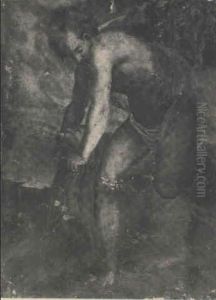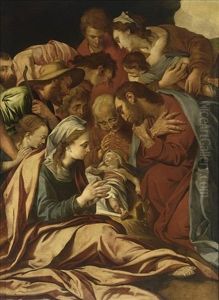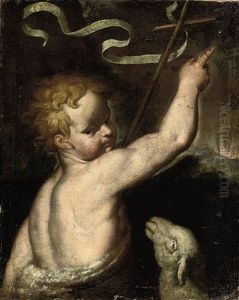Pellegrino Tibaldi Paintings
Pellegrino Tibaldi, also known as Pellegrino di Tibaldo de Pellegrini, was an Italian mannerist architect, sculptor, and painter who played a significant role in the art world of the 16th century. Born in Puria di Valsolda, now part of Italy, but then under Swiss dominion, Tibaldi's early life is somewhat obscure, but it is known that he moved to Rome in his youth, where he became a part of the vibrant artistic community there.
In Rome, Tibaldi was influenced by the works of Michelangelo and became a part of the mannerist movement, which sought to break away from the classical balance and harmony that characterized the Renaissance. His painting style is noted for its expressive figures and dynamic compositions, which often incorporated architectural elements, a testament to his dual talents as both an architect and a painter.
Tibaldi's work caught the eye of Cardinal Borromeo, who invited him to Milan to work on the decoration of the San Fedele church and the archbishop's palace. His work in Milan, particularly at the church of San Fedele, is considered one of his masterpieces, showcasing his skill in creating a harmonious blend of architecture, sculpture, and painting.
In 1586, Tibaldi was appointed as the chief architect of the Escorial by Philip II of Spain, a testament to his reputation and skill. His work on the Escorial, however, was short-lived due to disagreements with the Spanish king, and he returned to Italy, where he continued his work as an architect and painter until his death in Milan in 1596.
Throughout his career, Tibaldi's contributions to the mannerist movement were significant, both in Italy and Spain. His ability to blend different artistic disciplines helped pave the way for the baroque style that would dominate the 17th century. Today, Tibaldi is remembered as a key figure in the transition from Renaissance to Baroque art, with his works serving as a bridge between the two eras.
























